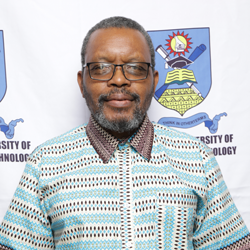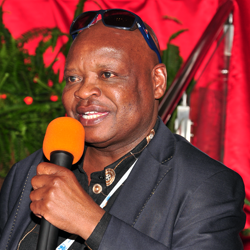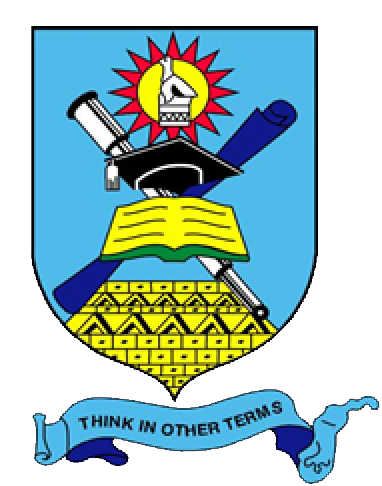OUR JOURNEY
To be a world-class University in science, technology, innovation, entrepreneurship and business development, spearheading industrialisation locally and beyond.
NUST is a young and progressive university established by an Act of the Zimbabwe Parliament in 1991. Using English as the language of instruction, NUST provides an invigorating intellectual climate, which fosters an academic community where both staff and students can push back the frontiers of knowledge in science and technology. As such NUST is a center of research, and has ties with universities on the African continent as well as the world. NUST is located in the warm and friendly City of Bulawayo, South West of Zimbabwe.
NUST Historical Background
The idea of a Second University in Zimbabwe was first mooted in June 1982 in the Report of the University of Zimbabwe, Vice Chancellor's committee of Inquiry into the high failure rates which that University experienced in the years 1980 and 1981.It was not until late 1987, that the Vice Chancellor of the University of Zimbabwe, Professor W. J. Kamba discussed with his colleagues the necessity of approaching Government about setting up a feasibility study of a second university/campus. As a result of this discussion a recommendation was made to the then Minister of Education, Dr Dzingai Mutumbuka that a Commission be set up to look into the question of a second institution of higher education in Zimbabwe.
The Commission presented its report to His Excellency, the late former President, Robert G. Mugabe on the 1st February 1989. Its major conclusion was that, on the basis of manpower requirements for economic growth and of the increasing number of well qualified `A' level school leavers, University expansion "is not only justified: it is also a necessity". It recommended that a "Second University should be established with a Science and Technology bias", and that the University "be located in Bulawayo and should admit its first students in 1993".
After considering the report of the Commission, the Government of Zimbabwe decided to accept all the recommendations contained therein except the one relating to the timing of the first intake of students. Instead of 1993 the government decided that the University should open its "doors" to the first intake of students in May 1991.
However, there was a delay in taking steps for the actual implementation of the commission's report. It was not until late 1989 that a committee was formed by the Ministry of Higher Education to make a first draft of the new University's enabling legislation. The final draft Bill was presented to the Zimbabwe Parliament by the then Minister of Higher Education, Cde David Karimanzira on the 24th of October, 1990. It was piloted through Parliament together with a Bill amending the 1982 University of Zimbabwe Act. The effect was to make the Acts of the two universities virtually identical.
The name "National University of Science and Technology (NUST)" was adopted for the New University in Bulawayo. Meanwhile, even before the new University Bill was presented to Parliament the Minister of Higher Education had constituted the foundation Committee of the then proposed National University of Science and Technology.
In spite of numerous rather frustrating delays resulting from the launching of the Foundation Committee before the enabling Act had been promulgated, the long gap between the presentation of the Bill to Parliament in October 1990 and its Publication in December 1990, the lack of financial and budgetary provisions for the work of the Committee and the protracted negotiations with Treasury emanating from this, the Foundation Committee managed to meet the deadline set by the Minister of Higher Education at the launching ceremony. The Committee managed to arrange for the first intake of students into NUST to take place in April 1991.
The Committee further decided that for the 1991 academic year the University should offer first year teaching in the Faculties of Commerce, Industrial Technology and Applied Sciences. These were chosen mainly by virtue of the fact that they offered courses which were closest to those which were being offered by the University of Zimbabwe through its Bachelor of Technology (B.Tech) programme at the Bulawayo Polytechnic. This made it possible for NUST to make use of the facilities at the Bulawayo Polytechnic for the benefit of its first year students. B. Tech. staff in Bulawayo were appointed by NUST and the transitional arrangements were satisfactory.
The National University of Science and Technology strives to become a flourishing and reputable institution not only in Zimbabwe and in Southern Africa but also among the international fraternity of Universities. Its guidance, cultural values is the encouragement of all its members and society of those attitudes of fair mindedness, understanding, tolerance and respect for people and views which are essential for the attainment and maintenance of justice, peace and harmony at all times.
On the 8th of April 1991, NUST opened for the very first time with 270 students in the three Faculties that have already been mentioned. The number of academic staff was 28.
On the 19th of May 1991, Professor P. M. Makhurane was appointed as the inaugural Vice-Chancellor of the University and soon after that Mr Lameck Sithole and Mr Michael Kariwo were appointed as the first Bursar and first Registrar respectively. Other staff followed and by the 1st of October 1991, the total numbers of people involved on a full-time basis with what was going on at NUST was as follows:-
NUST Historical Background
The idea of a Second University in Zimbabwe was first mooted in June 1982 in the Report of the University of Zimbabwe, Vice Chancellor's committee of Inquiry into the high failure rates which that University experienced in the years 1980 and 1981.It was not until late 1987, that the Vice Chancellor of the University of Zimbabwe, Professor W. J. Kamba discussed with his colleagues the necessity of approaching Government about setting up a feasibility study of a second university/campus. As a result of this discussion a recommendation was made to the then Minister of Education, Dr Dzingai Mutumbuka that a Commission be set up to look into the question of a second institution of higher education in Zimbabwe.
The Commission presented its report to His Excellency, the late former President, Robert G. Mugabe on the 1st February 1989. Its major conclusion was that, on the basis of manpower requirements for economic growth and of the increasing number of well qualified `A' level school leavers, University expansion "is not only justified: it is also a necessity". It recommended that a "Second University should be established with a Science and Technology bias", and that the University "be located in Bulawayo and should admit its first students in 1993".
After considering the report of the Commission, the Government of Zimbabwe decided to accept all the recommendations contained therein except the one relating to the timing of the first intake of students. Instead of 1993 the government decided that the University should open its "doors" to the first intake of students in May 1991.
However, there was a delay in taking steps for the actual implementation of the commission's report. It was not until late 1989 that a committee was formed by the Ministry of Higher Education to make a first draft of the new University's enabling legislation. The final draft Bill was presented to the Zimbabwe Parliament by the then Minister of Higher Education, Cde David Karimanzira on the 24th of October, 1990. It was piloted through Parliament together with a Bill amending the 1982 University of Zimbabwe Act. The effect was to make the Acts of the two universities virtually identical.
The name "National University of Science and Technology (NUST)" was adopted for the New University in Bulawayo. Meanwhile, even before the new University Bill was presented to Parliament the Minister of Higher Education had constituted the foundation Committee of the then proposed National University of Science and Technology.
In spite of numerous rather frustrating delays resulting from the launching of the Foundation Committee before the enabling Act had been promulgated, the long gap between the presentation of the Bill to Parliament in October 1990 and its Publication in December 1990, the lack of financial and budgetary provisions for the work of the Committee and the protracted negotiations with Treasury emanating from this, the Foundation Committee managed to meet the deadline set by the Minister of Higher Education at the launching ceremony. The Committee managed to arrange for the first intake of students into NUST to take place in April 1991.
The Committee further decided that for the 1991 academic year the University should offer first year teaching in the Faculties of Commerce, Industrial Technology and Applied Sciences. These were chosen mainly by virtue of the fact that they offered courses which were closest to those which were being offered by the University of Zimbabwe through its Bachelor of Technology (B.Tech) programme at the Bulawayo Polytechnic. This made it possible for NUST to make use of the facilities at the Bulawayo Polytechnic for the benefit of its first year students. B. Tech. staff in Bulawayo were appointed by NUST and the transitional arrangements were satisfactory.
The National University of Science and Technology strives to become a flourishing and reputable institution not only in Zimbabwe and in Southern Africa but also among the international fraternity of Universities. Its guidance, cultural values is the encouragement of all its members and society of those attitudes of fair mindedness, understanding, tolerance and respect for people and views which are essential for the attainment and maintenance of justice, peace and harmony at all times.
On the 8th of April 1991, NUST opened for the very first time with 270 students in the three Faculties that have already been mentioned. The number of academic staff was 28.
On the 19th of May 1991, Professor P. M. Makhurane was appointed as the inaugural Vice-Chancellor of the University and soon after that Mr Lameck Sithole and Mr Michael Kariwo were appointed as the first Bursar and first Registrar respectively. Other staff followed and by the 1st of October 1991, the total numbers of people involved on a full-time basis with what was going on at NUST was as follows:-
270 students
28 academic staff
41 administrators
11 support staff
On the 28th October 1991, the University organized a large public ceremony to instal its first Chancellor His Excellency Cde R. G. Mugabe, President of Zimbabwe and its first Vice-Chancellor, Professor Phinias Makhurane, and to lay the institution's Foundation stone. The ceremony was held at the University site where a large and colourful camp had been constructed for the purpose. A separate report on the installation and Foundation laying ceremony has been prepared and all the speeches delivered on that day are included in the report. (available from the information office).
For the 1992/93 academic year the University admitted an additional 300 students into the first year in the three existing faculties viz, Commerce, Applied Science and Industrial Technology. Student numbers grew to over 1200 by 1995. During the same period Academic Staff in post grew to 85.On Saturday 27 May 1995 the University held its first Graduation Ceremony at which the Doctor of Technology honorary degree was conferred upon the President and Chancellor Cde R.G. Mugabe. Some 163 graduates from the Faculties of Commerce and Applied Sciences were capped. This was indeed a historical event.
On the 20th of July, 1995 the University held its second graduation ceremony, where 281 graduands were capped. The first cohort of graduates from the Faculty of Industrial Technology and the Department of Computer Science were conferred with degrees on that occasion.
A generous donation by the Bulawayo City Council of a site 160 hectares in size and the provision of a capital budget by Government has enabled the first construction phase to begin. The Building programme was initially delayed due to the shortage of water in Bulawayo. Work started in March 1992 when the first contract valued at Z$4,6m was awarded to A. P. Gledinning for the bulk earth works and civil engineering construction for roads. Briefs for the building were completed in May 1992.
In July 1993 the construction programme started with the award of our first contract to Belmont Construction for the Administration Block. A year later, in September 1994 the second contractor, International Construction Zimbabwe started work on the Faculty of Commerce block. In November and December 1994 work also started on the departments of Chemistry and Chemical Engineering respectively. Construction of the first student hostel began a year later, in September, 1995. However, progress on the construction of this building has been hampered by cashflow problems. Work on the Library began in April 1998, followed by the Ceremonial Hall and the Student Services Centre in November of the same year.
The University moved to campus on the 1st of August, 1998, to occupy the Faculty of Commerce and Administration Buildings. The first lectures on campus took place in the Faculty of Commerce Building on the 17th of August, 1998
.
The university acknowledges the contributions of all those people who were so ready to render their services either as members of the Sub-Committees or in other capacities
For the 1992/93 academic year the University admitted an additional 300 students into the first year in the three existing faculties viz, Commerce, Applied Science and Industrial Technology. Student numbers grew to over 1200 by 1995. During the same period Academic Staff in post grew to 85.On Saturday 27 May 1995 the University held its first Graduation Ceremony at which the Doctor of Technology honorary degree was conferred upon the President and Chancellor Cde R.G. Mugabe. Some 163 graduates from the Faculties of Commerce and Applied Sciences were capped. This was indeed a historical event.
On the 20th of July, 1995 the University held its second graduation ceremony, where 281 graduands were capped. The first cohort of graduates from the Faculty of Industrial Technology and the Department of Computer Science were conferred with degrees on that occasion.
A generous donation by the Bulawayo City Council of a site 160 hectares in size and the provision of a capital budget by Government has enabled the first construction phase to begin. The Building programme was initially delayed due to the shortage of water in Bulawayo. Work started in March 1992 when the first contract valued at Z$4,6m was awarded to A. P. Gledinning for the bulk earth works and civil engineering construction for roads. Briefs for the building were completed in May 1992.
In July 1993 the construction programme started with the award of our first contract to Belmont Construction for the Administration Block. A year later, in September 1994 the second contractor, International Construction Zimbabwe started work on the Faculty of Commerce block. In November and December 1994 work also started on the departments of Chemistry and Chemical Engineering respectively. Construction of the first student hostel began a year later, in September, 1995. However, progress on the construction of this building has been hampered by cashflow problems. Work on the Library began in April 1998, followed by the Ceremonial Hall and the Student Services Centre in November of the same year.
The University moved to campus on the 1st of August, 1998, to occupy the Faculty of Commerce and Administration Buildings. The first lectures on campus took place in the Faculty of Commerce Building on the 17th of August, 1998
.
The university acknowledges the contributions of all those people who were so ready to render their services either as members of the Sub-Committees or in other capacities
Our Vice-Chancellors

Professor Mqhele E. Dlodlo (Current)

Professor Samson Sibanda (Acting: 2015-March 2018)

Professor Lindela R. Ndlovu (2005-2015)


